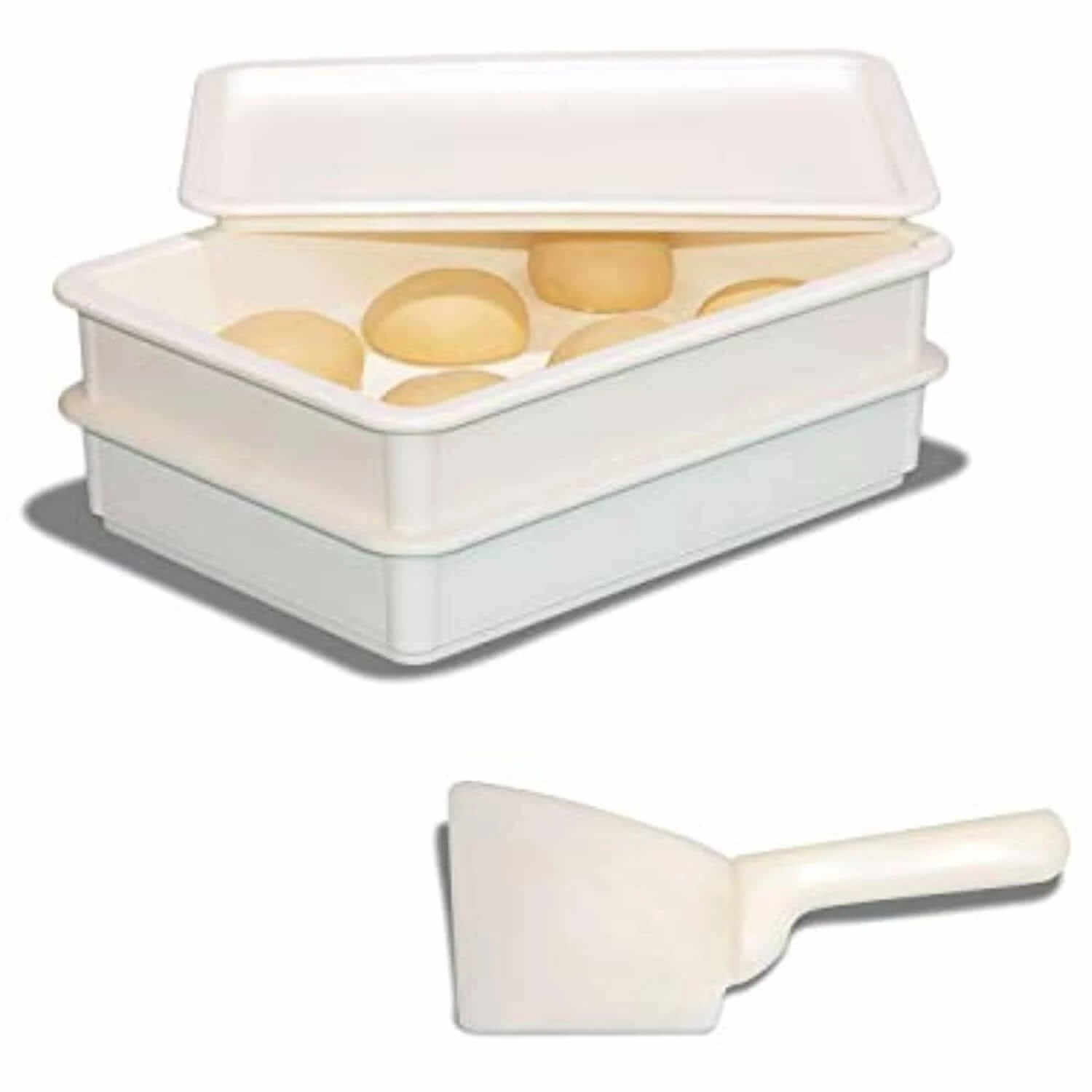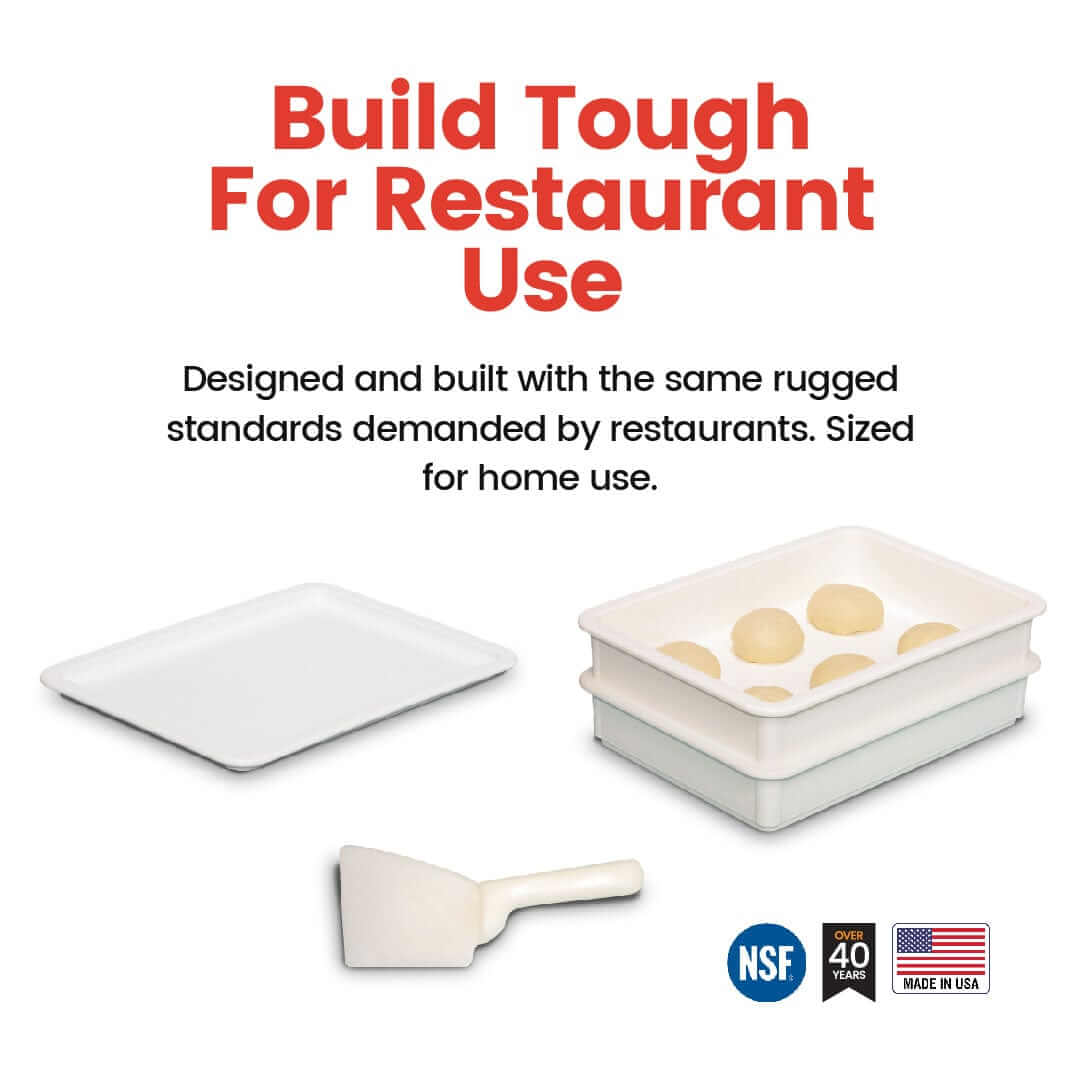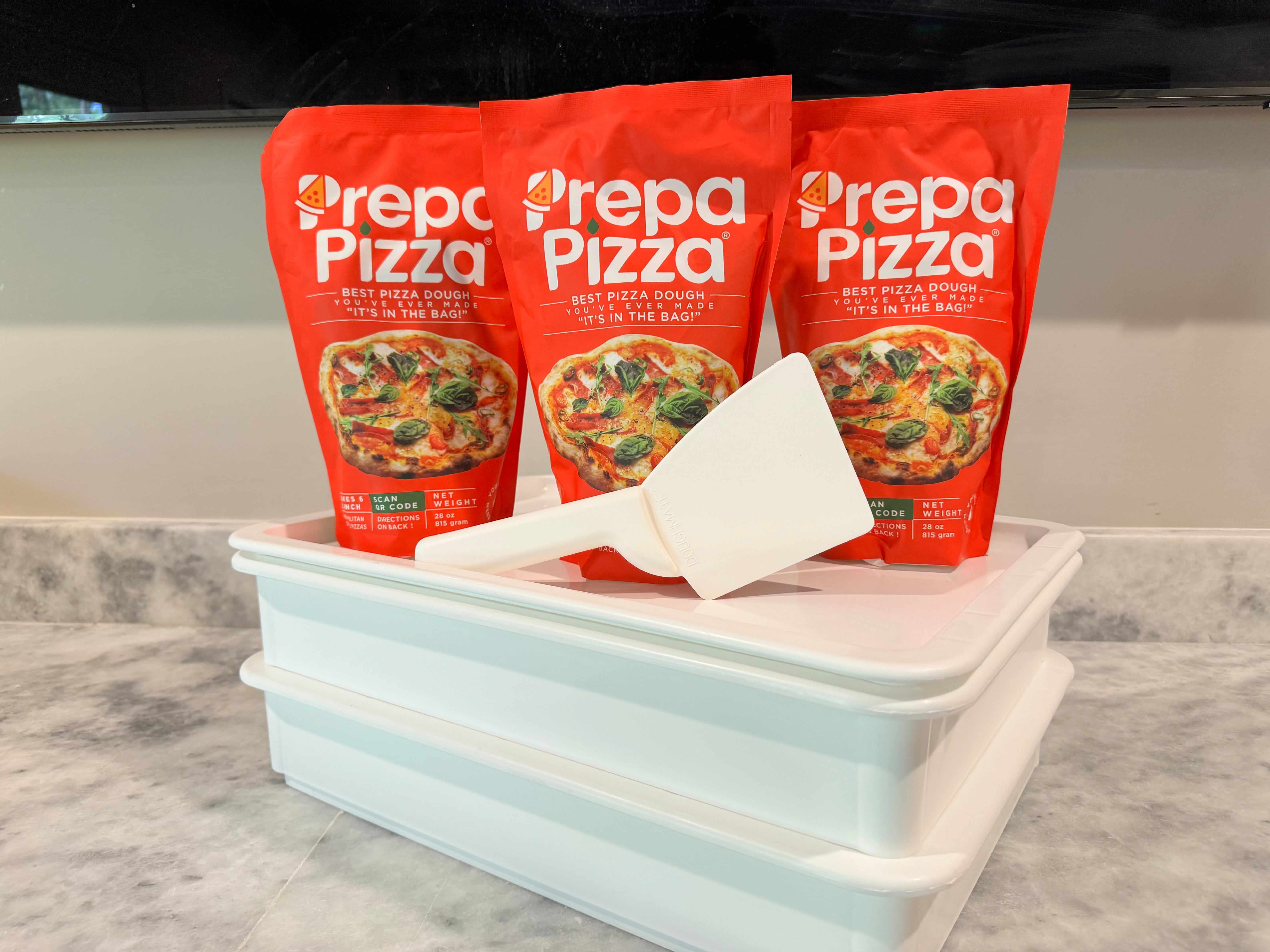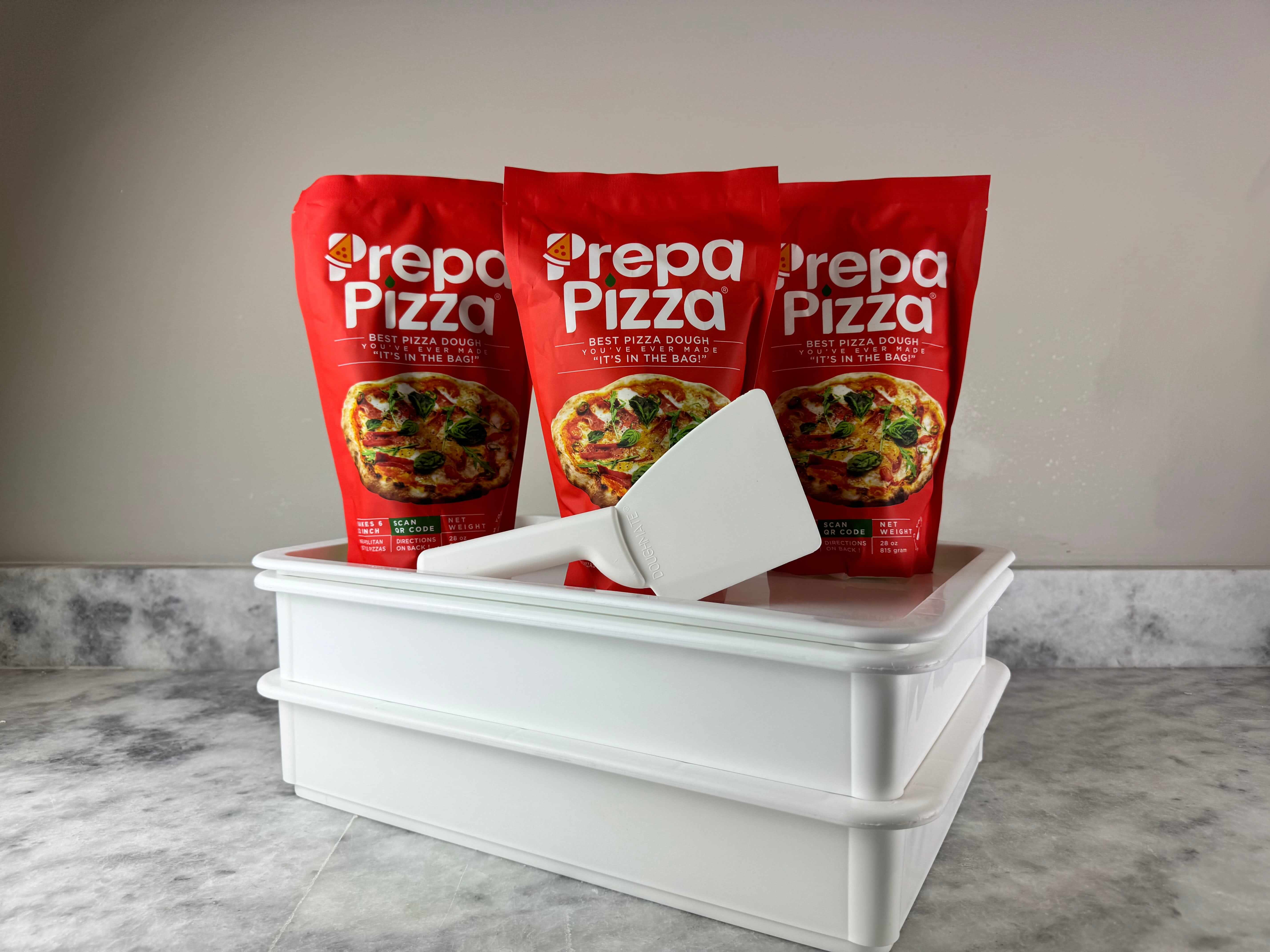
How to Proof Store Bought Pizza Dough for Perfect Results
When it comes to making delicious homemade pizza, achieving the right texture and flavor starts with the dough. To ensure great results, it’s essential to proof store-bought pizza dough, allowing it to rise and develop its flavor. With Prepa Pizza's premade dough, you can enjoy restaurant-quality pizza at home. Take a moment to check out the Prepa Pizza dough kit for a convenient option that simplifies the process.
Proofing store-bought pizza dough involves letting it rest and rise to achieve the best texture. Most doughs need to sit at room temperature for about 30 minutes to three hours, depending on the specific product. This step is crucial because it allows the gluten to relax and the yeast to become active, leading to a fluffy, well-structured crust.
By understanding how to properly proof your dough, you can enhance your pizza-making experience. With Prepa Pizza's high-quality ingredients, you are well on your way to crafting a pizza that will impress family and friends alike.
Understanding Store-Bought Pizza Dough
Store-bought pizza dough offers convenience without compromising quality. It can save you time while providing a range of options that cater to different preferences. Options like Prepa Pizza's premade dough ensure a delightful experience with every bite.
Types Of Store-Bought Pizza Dough
Store-bought pizza dough typically comes in several forms:
- Frozen Dough: This is pre-prepared and frozen to maintain freshness. You’ll need to thaw it before use.
- Refrigerated Dough: Found in the dairy aisle, this dough is ready to shape after a short rest at room temperature.
- Pre-made Crusts: These are usually pre-baked and only need toppings. They provide the easiest option but may lack texture.
Prepa Pizza offers a premium quality dough option that balances flavor and ease of preparation, ensuring excellent results for your pizza.
Ingredients And Their Roles
Understanding the ingredients in pizza dough can enhance your experience. Here are key components:
- Yeast: This is essential for leavening, creating air pockets that make the dough light and airy.
- Flour: A high-protein flour, like bread flour, provides the necessary structure and chew.
- Sugar: This adds a touch of sweetness and helps in browning the crust. It also feeds the yeast.
- Salt: Essential for flavor, it also strengthens gluten, improving texture.
Prepa Pizza's dough utilizes these ingredients to create a flavorful base, making your pizza delicious and satisfying.
Differences From Homemade Pizza Dough
While homemade pizza dough may allow for customization, store-bought options have distinct advantages.
- Consistency: Store-bought dough, like Prepa Pizza’s, maintains uniformity in taste and texture due to controlled ingredients.
- Convenience: There’s no preparation time needed, just thaw or heat it. Homemade dough requires more time for mixing, kneading, and proofing.
- Flavor: Many store-bought options are crafted using quality ingredients to ensure a delightful taste that can rival homemade varieties.
Using store-bought dough can reduce kitchen stress, allowing you to focus on toppings and presentation.
The Proofing Process For Store-Bought Dough
When working with store-bought pizza dough, understanding proofing is essential for achieving the best results. Proper proofing ensures the dough rises effectively, enhancing texture and flavor. Here’s how to navigate this critical process with Prepa Pizza’s premium quality premade dough.
What Is Proofing And Why It Matters
Proofing is the resting stage of the fermentation process for dough. During this time, yeast becomes active, consuming sugars and producing carbon dioxide. This gas creates air pockets, which contribute to a light and airy crust.
For store-bought dough, proofing significantly affects the structure formed by gluten. When the dough is allowed to rise properly, it becomes more manageable and will stretch easily without tearing. If it is under-proofed, your pizza may end up dense and chewy.
Room Temperature Versus Refrigerated Proofing
You have two primary options for proofing store-bought dough: room temperature or refrigerated proofing.
Room Temperature Proofing: Leaving the dough at room temperature usually takes about 30 minutes to 1 hour. This method encourages robust yeast activity, resulting in a rapid rise. Ensure your dough is covered to maintain moisture.
Refrigerated Proofing: This method permits slower fermentation, often over several hours or even overnight. Placing the dough in an airtight container helps retain moisture and prevents drying. This extended time enhances flavor and texture, allowing gluten to develop thoroughly.
Choosing The Right Container For Proofing
Selecting the appropriate container is crucial for effective proofing. An airtight container works best to create a controlled environment for your dough.
Use a bowl covered with plastic wrap or a dedicated proofing box, ensuring it traps moisture. Alternatively, you can simply use Prepa Pizza's packaging, which is designed for optimal dough storage.
Ensure the container is large enough to accommodate the dough as it rises. Insufficient space may hinder its growth. Pay attention to its temperature, as these factors significantly influence yeast activity and the overall success of your pizza.
Step-By-Step Guide: How To Proof Store-Bought Pizza Dough
Proofing store-bought pizza dough correctly is crucial for achieving a light and airy crust. Prepa Pizza offers premium quality premade dough, which is easy to work with and yields fantastic results. Following these steps will help ensure your dough rises perfectly, allowing you to enjoy delicious homemade pizza.
Preparing The Dough For Proofing
Start by removing your Prepa Pizza dough from its packaging. Place it on a clean surface and gently shape it into a ball if necessary. Ensure your hands are lightly floured to prevent sticking.
Next, lightly coat the dough with olive oil to keep it from drying out during proofing. This will form a protective layer, allowing the dough to rise without forming a crust.
Transfer the dough into a bowl or container that provides enough space for the dough to expand. Cover it tightly with plastic wrap or a damp cloth to retain moisture.
Setting The Ideal Proofing Temperature
For the best results, proof your dough in a warm environment. The ideal proofing temperature is around 75°F to 80°F (24°C to 27°C). This warmth encourages yeast activity, leading to a better rise.
If your kitchen is cool, consider using your oven with the light on or placing the dough near a heat source, such as a sunny window. Avoid direct heat, as it might dry out the dough.
Creating a makeshift proofing box can also help maintain consistent temperatures. Simply place a bowl of hot water in the oven alongside the covered dough to generate a warm, humid environment.
Monitoring Proofing Time
Proofing time can vary based on the temperature and humidity levels. Generally, store-bought pizza dough requires about 1 to 2 hours to rise.
Check the dough periodically, watching for its volume increase. It should roughly double in size when ready.
If you’re in a hurry, you can also speed up the process by placing the dough in a slightly warmer area or even using the microwave on low power for short bursts. Just be cautious—prolonged exposure to heat can harm the yeast.
Testing Dough Readiness: The Poke Test
To confirm that your Prepa Pizza dough has completed proofing, perform the poke test. Gently poke the dough with your finger.
If the indentation springs back slowly, the dough is ready to use. If it quickly fills in, it requires more proofing time.
This simple method allows you to determine the perfect moment to proceed to shaping your pizza. Always ensure your dough is adequately risen for the best texture and flavor in your homemade pizza.
Maximizing Flavor And Texture During Proofing
When using Prepa Pizza's premade dough, achieving the best flavor and texture involves careful attention to specific factors during the proofing process. By managing fermentation time, developing gluten structure, and avoiding over-proofing, you can significantly enhance the results.
Managing Fermentation Time
Fermentation time is crucial for flavor development. For Prepa Pizza's premade dough, allow it to rest at room temperature for about 30 to 60 minutes. This duration lets the yeast activate, creating carbon dioxide and giving the dough a lighter structure.
To ensure optimal flavor, consider the ambient temperature. Warmer environments can speed up fermentation, while cooler temperatures extend it. Adjust your proofing based on your kitchen's climate to achieve the desired balance.
Developing Gluten Structure
A well-developed gluten structure contributes significantly to both flavor and texture. Kneading your dough gently before proofing helps create the necessary elasticity. This process allows for better gas retention during fermentation.
After the initial kneading, let the dough rest to relax any tension. This can be done for 10-15 minutes before shaping. The result will be a dough that not only rises well but also produces a chewy, satisfying crust.
Avoiding Over-Proofing And Common Mistakes
Over-proofing can lead to a loss of structure and texture in your pizza dough. To avoid this, closely monitor the dough as it rises. Signs of over-proofing include excessive softness and a lack of bounce when pressed lightly.
Another common mistake is failing to use sufficient flour when shaping. While Prepa Pizza's dough is designed for easy handling, a moderate dusting of flour can prevent sticking and aid in shaping without compromising the dough's integrity.
Focus on these elements during the proofing stage to ensure a delicious and well-textured pizza crust.
Tips For Pizza-Making With Proofed Dough
Utilizing proofed pizza dough can elevate your homemade pizza experience. When using Prepa Pizza's premade dough, you can achieve a restaurant-quality crust at home by following essential tips on shaping, creating the perfect crust, and effective baking techniques.
Shaping Dough Balls For Pizza
Start by dividing your proofed dough into equal portions. Aim for 8 to 10-ounce balls for individual pizzas. Once portioned, gently shape each piece into a ball by tucking the edges underneath. This technique creates surface tension, which helps achieve a better rise during baking.
Let dough balls rest for about 20 minutes on a lightly floured surface. This allows the gluten to relax, making it easier to stretch. When ready to shape, use your fingertips to press from the center outward, allowing air bubbles to remain intact around the edges. These bubbles contribute to a light, airy crust when baked.
Creating The Perfect Pizza Crust
For the ideal pizza crust, focus on thickness and texture. Neapolitan pizza typically has a thin center with raised, airy edges. When stretching your dough, maintain consistent thickness. Aim for about ¼ inch in the center, while ensuring the outer rim is thicker.
Consider adding a sprinkle of cornmeal on your pizza peel before transferring the dough. This prevents sticking and adds a slight crunch. Toppings should be added sparingly to prevent overwhelming the crust, allowing it to cook evenly. High-quality sauces and cheeses enhance flavor without making the crust soggy.
Baking Techniques For Home Kitchens
Home baking can produce impressive results with the right techniques. Preheat your oven as high as it will go, ideally around 500°F (260°C). If using a pizza stone, place it in the oven to preheat as well. A hot surface helps create a crispy base.
When you’re ready to bake, slide your pizza onto the preheated stone or baking sheet. Rotate it halfway through the baking time for an even cook. Keep an eye on the pizza as it bakes, aiming for a golden-brown crust with visible air bubbles. Utilize a kitchen thermometer to ensure your pizza reaches an internal temperature of at least 200°F (93°C) for optimal results.
Frequently Asked Questions
When using Prepa Pizza's premade dough, you might have specific queries about its proofing and preparation. Here, you'll find precise answers to ensure you achieve the best results with your pizza-making endeavors.
What is the best method for proofing store-bought pizza dough?
The ideal method involves placing the dough in a warm, draft-free area. Cover it with a damp cloth to prevent drying out. Allow it to rise until it has doubled in size, which typically takes about 30 to 90 minutes.
Can store-bought pizza dough be left to rise overnight? If so, how?
Yes, you can leave it to rise overnight. For optimal results, place the dough in a lightly oiled bowl, cover it tightly with plastic wrap, and refrigerate. This slow fermentation enhances flavor and texture.
What are the steps for rolling out store-bought pizza dough to achieve the best results?
Start by letting the dough come to room temperature. Lightly flour your work surface to prevent sticking. Roll it out gently with a rolling pin or stretch it by hand to achieve your desired thickness, keeping the edges slightly thicker for a better crust.
How long should store-bought pizza dough be cooked to ensure proper doneness?
Bake your pizza at a high temperature, around 475°F (246°C), for about 12 to 15 minutes. The crust should be golden brown, and the cheese melted and bubbly to ensure a properly cooked pizza.
Are there any special techniques for helping store-bought pizza dough to rise more effectively?
To enhance rising, ensure your dough is at room temperature before proofing. You might also consider preheating your oven to around 200°F (93°C) for a few minutes, then turning it off and placing the dough inside to rise in a warm environment.
What creative recipes can be made using store-bought pizza dough besides traditional pizza?
You can make calzones, stuffed breadsticks, or even dessert pizzas using your dough. The versatility allows for fillings like cheeses, vegetables, or sweet toppings, expanding your culinary options. For more ideas, explore the various uses of Prepa Pizza dough.






























